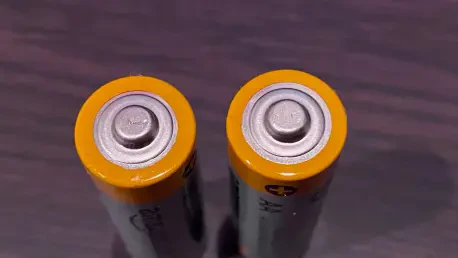In a world increasingly reliant on renewable energy, Italy has taken a groundbreaking step to address the challenges of grid stability and energy supply with its inaugural battery storage auction, marking a significant milestone in modernizing its energy infrastructure. As the nation ramps up its use of intermittent sources like wind and solar, the need to balance supply and demand has never been more critical. This pioneering initiative, led by Terna, the national grid operator, demonstrates a robust commitment to integrating renewables while mitigating price volatility. By successfully awarding all 10 gigawatt hours of storage capacity tendered, Italy has shown strong industry interest and set a precedent for other nations striving to meet decarbonization goals. This move not only showcases the potential of strategic energy storage to transform the landscape but also ensures that excess power generated during peak production is stored and released during high demand, thus stabilizing the grid.
A Milestone in Renewable Integration
Auction Outcomes and Key Players
Italy’s first battery storage auction has yielded impressive results, with the entire 10 gigawatt hours of capacity awarded to eager developers. Leading the charge, Enel, the country’s largest utility, secured over half of the capacity through five distinct projects, underscoring its dominant role in the energy sector. Additionally, Plenitude, a subsidiary of Eni, clinched two projects amounting to 500 megawatt hours, reflecting a competitive yet collaborative environment among major players. The awarded capacity, built on lithium-ion technology, is slated to become operational by 2028, promising a significant boost to grid reliability. This outcome signals strong market confidence in the viability of storage solutions, as developers vied for contracts with offered capacity quadrupling the tendered amount. Such enthusiasm points to a maturing renewable energy framework in Italy, where storage is seen as a cornerstone for managing the variability inherent in wind and solar power generation.
Financial Incentives and Investment Impact
The financial structure of the auction has been a key driver of its success, offering developers a fixed revenue of roughly 13,000 euros per megawatt hour annually for a 15-year period. This rate, significantly lower than the regulatory cap of 37,000 euros, reduces investment risks and accelerates project deployment, making storage initiatives more attractive to private entities. The awarded capacity represents an estimated investment of around 1 billion euros, a figure emphasized by Terna’s CEO, Giuseppina Di Foggia, as a testament to the economic potential of storage in integrating renewables. This substantial financial commitment not only fosters technological advancement but also stimulates job creation and innovation within the sector. By providing stable returns, the auction model balances public policy objectives with private sector incentives, ensuring that sustainability goals are met without compromising economic viability for developers engaged in this transformative energy shift.
Shaping the Future of Energy Policy
Strategic Role of Storage in Decarbonization
Battery storage stands as a pivotal solution in Italy’s broader strategy to combat climate change and align with European Union decarbonization targets. As renewable energy sources grow in prominence, their intermittent nature poses challenges to grid stability, often leading to supply-demand imbalances and price fluctuations. Storage systems address this by capturing surplus energy during periods of high production and releasing it when demand peaks or production dips, preventing drastic price drops and encouraging sustained investment in renewables. Terna’s initiative reflects a proactive approach to modernizing the grid, ensuring that the transition to a low-carbon economy does not compromise reliability. This auction serves as a blueprint for how infrastructure development can support environmental goals, positioning Italy as a leader in the global push for sustainable energy practices amidst rising climate concerns.
Future Plans and Industry Confidence
Looking ahead, Terna has signaled its intent to build on the momentum of this auction by planning additional tenders, including one focused on hydroelectric storage to diversify the energy storage portfolio. This forward-thinking approach underscores a commitment to continuously evolve the grid’s capabilities in response to growing renewable integration. The overwhelming industry participation in the initial auction, with capacity offers far exceeding availability, highlights deep confidence in the profitability and necessity of storage projects under the fixed revenue model. Such enthusiasm suggests that future auctions will likely see similar or even greater engagement, further solidifying Italy’s role as an innovator in energy transition. As these projects unfold through the coming years, they promise to reshape the national energy landscape, offering actionable solutions to the challenges of renewable adoption while paving the way for other nations to follow suit with similar initiatives.
Reflecting on a Groundbreaking Step
Italy’s first battery storage auction proved to be a resounding success, having allocated all tendered capacity at competitive rates and setting a robust foundation for projects that came online as planned. Major players like Enel took the lead in driving this change, while the financial framework provided the stability needed to attract significant investment. This initiative tackled critical hurdles in renewable energy integration, ensuring grid stability in a time of transition. Looking forward, the focus shifted to expanding storage solutions through subsequent auctions and exploring diverse technologies. This strategic direction not only reinforced Italy’s commitment to sustainability but also offered a model for balancing economic and environmental priorities. As the energy sector continued to evolve, the emphasis remained on scaling infrastructure and fostering innovation to meet future demands, ensuring that the lessons from this pioneering effort guided the path toward a cleaner, more resilient energy system.









